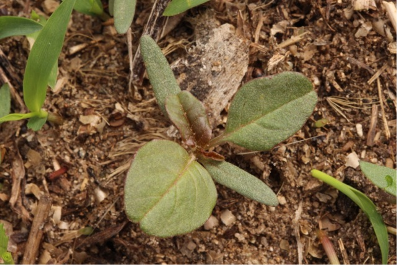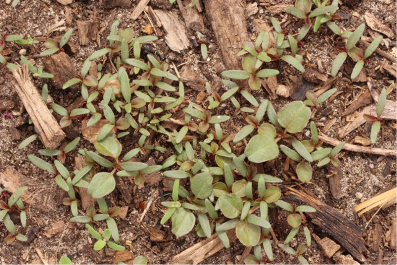Most people are aware that the first confirmed Palmer amaranth infestations were found in Iowa late in 2013. Infestations have been found in five Iowa counties, but we suspect there are more unknown infestations than known.
We visited an infestation in Muscatine County on May 9. There was an abundance of Amaranthus seedlings present in the area infested with Palmer amaranth last fall. We are fairly confident that these seedlings were Palmer amaranth because there was little or no waterhemp, or other pigweed species, present in the field last fall. However, I am not convinced that it is possible to distinguish the two species while they are in the seedling stage.
While plants are in the vegetative stage the long petioles on Palmer amaranth are probably the best trait to differentiate Palmer amaranth and waterhemp. Palmer amaranth leaves frequently are wider in relation to their length compared to waterhemp. Palmer amaranth also tends to have a ‘bushier’ growth habit, whereas waterhemp is leggy and has an open canopy. Another characteristic of Palmer amaranth is its very rapid growth rate. A poster describing the two weeds is available for downloading on the ISU Weed Science Web site, and we have a limited supply of printed copies.
The simplest way to manage a weed is to prevent it from getting established. While it is unlikely that all of the current Palmer amaranth infestations will be eradicated, the rate that Palmer amaranth spreads across the state can be reduced. Early detection of new infestations is critical; unfortunately, the similarities between Palmer amaranth and waterhemp complicate this process. Closely monitor fields for any "pigweeds" that behave unusually. Fortunately, it is relatively easy to differentiate the two species once they begin to flower.
 Image 1. Two-leaf Palmer amaranth. |
 Image 2. Group of Palmer amaranth seedling. |
We would appreciate being contacted if any fields are found with suspected Palmer amaranth.





